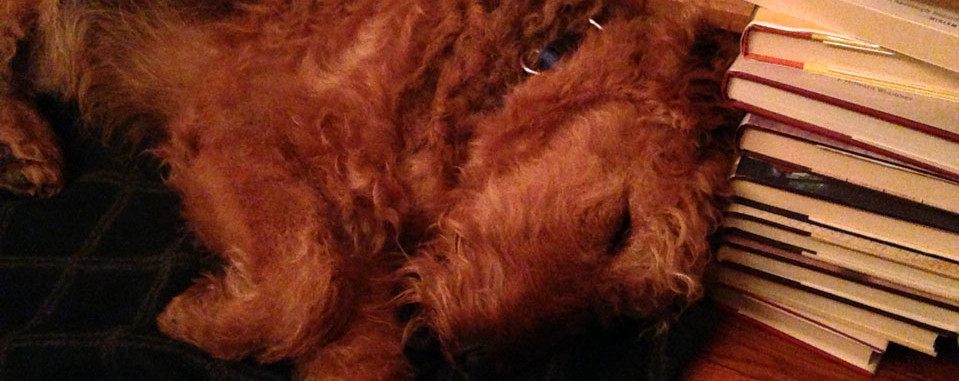 Minds of Winter, by Ed O’Loughlin has been on my mind a lot in recent months.
Minds of Winter, by Ed O’Loughlin has been on my mind a lot in recent months.
As I’ve mentioned before, I regularly prepare readers’ guide discussion questions for some House of Anansi Press titles. Early this year, I had the pleasure of losing myself in Minds of Winter, then finding my way back out sufficiently to put together some questions that I hope did this sprawling, engrossing novel justice.
As I’ve also mentioned before, I’ve discovered that formulating these questions is an excellent way to more fully and deeply appreciate a work. You go in as a book’s advocate when you know you’re compiling questions, because you assume from the outset that people have been motivated to obtain the book, read it and discuss it with others, so there must be some respect for the book and positive perspectives on its value, out of respect for those readers. I didn’t have to work hard to remind myself of this advocacy role, however, because I quickly found myself wrapped up and captivated by the book.
The following are the reader’s guide questions that I developed for Minds of Winter. (These are the questions I submitted to Anansi. An edited version of the questions are provided to accompany the book.) If you’ve read the book, are these questions useful for exploring the book further? If you haven’t read the book, do the questions perhaps spark your interest in the book?
-
“Maybe stories converge at the poles. Like the lines on the map,” Fay observes to Nelson as they realize her grandfather and his brother seemed to have similar interests and trajectories as they made their way in the Arctic. How does this observation inform the entire collection of stories in Minds of Winter? Are there logical and perhaps mundane reasons for why these stories seem to intersect – at both poles, in fact – or is Fay suggesting something bigger and perhaps more mystical?
-
How does “The Snow Man” by Wallace Stevens, the poem that stands as the epigraph to Minds of Winter, serve the story that follows? Select a line or phrase that could best capture the novel’s over-arching theme. For example, argue for or against:
For the listener, who listens in the snow,
And, nothing himself, beholds
Nothing that is not there and the nothing that is.Are all of the characters who survive and even thrive in their time in the Arctic good listeners?
-
Who are the most attuned listeners in Minds of Winter (referencing again Wallace Stevens’ “The Snow Man”)? As readers, we are given intimate access to Hugh Morgan’s thoughts as he listens and listens. Who else is a good listener, of either the Arctic environment or of others around him or her?
-
What useful purposes are served in stories like this, where real-life characters intermingle with fictional characters or, from another perspective, fictional characters are put in front of a real life/historical backdrop?
-
Exploration and mapping were historically male-dominated pursuits. In Minds of Winter, several women influence the explorers and voyages. Discuss three women who play significant roles or make important appearances in the novel’s different exploration stories.
-
In the prologue to Minds of Winter, horologists are delving into the mystery of the carriage clock that is purported to be a disguised chronometer from the Franklin expedition. Horology is defined as both the science of measuring time and the art of making instruments for indicating time (Merriam Webster). Give examples from the novel of where the passage of time and use of timepieces helps or fails different characters or enterprises.
-
The chronometer described in the prologue to Minds of Winter appears, disappears and reappears throughout the novel. The object is a resonant thematic component throughout the novel, but as part of the mysteries being explored, is it an important talisman or kind of a red herring?
-
“The white planks of the deck were a snow field; the dancers were swirls in a blizzard, figments of a winter dream.” Minds of Winter begins with an elaborate society ball in Tasmania that juxtaposes political and military machinations with seemingly trite society intrigue. Give examples of the several ways in which this opening sequence sets the stage for characters, storylines and themes that follow.
-
J.R.R. Tolkien once observed the following about the fictional maps designed to accompany his fantasy works: “They are more than illustrations, they are a collateral theme. I showed them to my friends whose polite comment was that they reduced my text to a commentary on the drawings.“ How do the maps included throughout Minds of Winter enhance – or distract or detract from – the novel’s storylines?
-
Is there significance to explorer John Meares’ repeated declaration “I was trading in furs”, and his observations about whether others he encountered in his travels were or were not also interested in the fur trade?
-
Does Minds of Winter give convincing evidence of the true identity of Albert Johnson, the Mad Trapper of Rat River?
-
“Was it to rob her of freedom that Amundsen had sent for her? Is that what possession had meant to him? Was that why he’d flown away in the end?” Bess Magids muses in her final search for clues about Roald Amundsen’s fate. Who in the sprawling cast of characters in Minds of Winter has true freedom? Do all seem to be shackled to another person, to a commitment or obsession?
-
“Some people slip through the cracks,” enigmatic RCMP Sergeant Peake concludes in his report that closes Minds of Winter. Is that true, or does someone only truly do that if no one remembers them anymore? For example, even though Sgt Peake purports to not know the people he is referring to in his report, we the readers do. Build a case to agree or disagree with this conclusion by connecting it to the concept of people dying two deaths: first, their physical death and second, their death when the last person who remembers them dies.
-
“[the photograph] showed two men in winter clothing standing at the door of an old-fashioned ski-plane. It was not these men who had interested Bert, it seemed, but two shadows, one on either side of them, cast by figures just out of the frame. Bert had circled both shadows several times with a marker pen.” Several characters in Minds of Winter are situated more out of the stories’ frames than in it. Who casts the biggest shadow?
-
Family relationships are clearly important throughout Minds of Winter, but are they largely a burden or a blessing? Give examples of both.
-
Is Fay and Nelson’s final fate tragic or romantic? Is it surprising?
My fascination with the book didn’t end when I handed in the questions, however. A potential opportunity to promote a work of my choice from an Ontario-based publisher inspired me to record a 30-second review of Minds of Winter … which you can, er, endure right here:
… and if you don’t want to listen, here’s basically what I had to say:
Minds of Winter continues with the legendary Franklin expedition from where the likes of Margaret Atwood, Mordecai Richler and Stan Rogers left off. [Author Ed] O’Loughlin melds historical fact with enigmatic fictional characters, blending in World War I intrigue, Inuit life and traditions, polar climate and terrain, ghosts, hallucinations and maps, lots of maps. The maps are kind of ironic because this is a story about people who are lost or who want to be lost.
Oh no, I won’t make a habit of book vlogging. It’s good book reviewing practice, mind you, to force yourself to boil it down to 30 seconds. That was fun.
Thank you to House of Anansi Press for the opportunity to read an advance version of Minds of Winter by Ed O’Loughlin.
See also:
- Frozen in Time, by Owen Beattie and John Geiger
- Solomon Gursky Was Here, by Mordecai Richler
Minds of Winter by Ed O’Loughlin (House of Anansi Press, 2017)
